The GSMArena tablet buyer's guide: June 2014
June 2014
Compact tablets
In this chapter, we'll be focusing on compact tablets measuring about 7". These tablets oftentimes come with 3G or LTE-enabled variants, which can be great for when you need connectivity on the go - and let's face it, seven-inch or thereabout is the only tablet size that's truly portable.
We've sorted the following by price, although keep in mind that pricing and availability can vary widely by region. Mobile internet-enabled tablets are oftentimes available from mobile carriers at special discounts, which adds another wrinkle to the equation.
We get things underway with the Nook HD tablet from Barnes & Noble (available in the US and the UK). There have been murmurs of a new Nook model simmering in the background since our previous guide, but nothing has been announced in that regard as of yet, and the Nook continues to be one of the best deals around.
It offers a 7-inch 1440 x 900 display, alongside a rather modest 1.3GHz dual-core Cortex-A9 processor. What the Nook really has going for it, however, is the price - it costs $129/ £79 respectively. That's less than €100, so it's a price other major manufacturers simply can't beat. How long that will last, however, is anyone's guess, and it could be that B&N is clearing its inventory prior to announcing its next model.
Some sacrifices were inevitable, of course, and those come in the form of performance and availability. The Nook's TI OMAP 4470 processor is passable at best in terms of processing power and, given that Texas Instruments has retired from the chipset game, it could have difficulty getting future Android versions.
Also all Nook tablets come with a custom Nook UI, which is quite far from a true Android experience, so you better know your rooting/CyanogenMod if you want vanilla Android. Still, the Google Play store is available, so your app needs will be covered without any hacks needed.
 Barnes & Noble Nook HD |
Pros | Cons |
|
|
|
Up next is a compact tablet from Asus that has aged nicely. The Asus MeMo Pad HD7 has made it onto our previous two guides, and thanks to its expandable storage and a relatively recent Android version it continues to be relevant. The fact that its price continues to fall doesn't hurt either.
The HD7 offers a quad-core 1.2GHz processor, 1GB of RAM, and Android 4.2 Jelly Bean. For all intents and purposes, it's a cheaper version of the original Google Nexus 7 (also made by Asus), except that it's running on MediaTek chipset and has a microSD card slot for expanding the limited memory - it's either 8GB or 16GB of built-in storage with this one.
The screen is a bit low on pixel density, but it's an IPS LCD unit so it offers excellent side viewing angles making for a nice user experience.
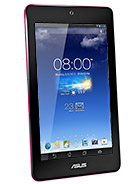 Asus MeMo Pad HD7 |
Pros | Cons |
|
|
|
Previously, Samsung's Galaxy Tab lineup didn't make it onto our guide simply because there were more capable offerings at lower price ranges. With the Galaxy Tab 4 series Samsung has put their lower cost tablets back on our wish lists.
When it comes to a Wi-Fi only model, the Samsung Galaxy Tab 4 7.0 offers the same basic package as the MeMo Pad HD7, for example, except that it's priced slightly higher. That definitely makes it a hard sell, but let's not forget it enjoys the latest Android 4.4 KitKat.
However, Samsung has priced the LTE edition very competitively, and the sub-€300 price tag is the cheapest price at which you can find an LTE-enabled tablet. If you need a competitively priced compact tablet that you can take on the go, the Tab 4 7.0 and its 4G connectivity is unbeatable.
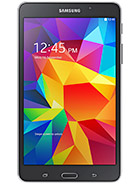 Samsung Galaxy Tab 4 7.0 |
Pros | Cons |
|
|
|
The second generation Nexus 7 tablet caused quite a stir at its unveiling last summer, and although the price hasn't dropped significantly, it's still a very compelling offering.
Google and Asus really went out of their way to give the Nexus 7 a complete and thorough upgrade for the 2013 model. The tablet is powered by a quad-core 1.5GHz Snapdragon S4 Pro chipset with Adreno 320 GPU, and 2GB of RAM. The Nexus 7 is still one of the few tablets to run the latest Android 4.4 KitKat, as well. Not to mention it's pretty much the only compact tablet to come with built-in wireless charging capabilities, which is a nice perk even though you'd need the optional wireless charger for that.
Plus, it's the only one of our tablet recommendations that weighs below 300 grams. The only real downside is that is has no memory card slot, so you should definitely pay the premium to get the 32GB model. The user available storage on the 16GB version simply doesn't cut it by our books.
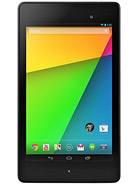 Asus Google Nexus 7 (2013) |
Pros | Cons |
|
|
|
| Review | ||
Finally, in terms of raw horsepower, nothing beats the Kindle Fire HDX in this class. It runs on a quad-core 2.2GHz Snapdragon 800 processor and Adreno 330 GPU, alongside 2GB of RAM. Like the Nexus 7, it hasn't dropped much in price (read: it's pricey), but unlike the Nexus 7 its Android version is highly customized and does not have Google Play support. Instead, you'll have to rely on the less-varied Amazon App Store for your app needs and have Amazon's web services replace Google's.
There's no microSD card slot on this one either, so we'd recommend at least the 32GB version if you decide to go for the latest Kindle Fire.
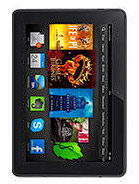 Amazon Kindle Fire HDX |
Pros | Cons |
|
|
|
Possessing a distinct iPhone-like design, the Huawei MediaPad X1 is another tablet that can make and receive calls - and it's also probably the most expensive tablet on this page.
We had a chance to check the X1 out at the MWC 2014 in February and our impressions are only positive. Tthe unusual choice of chipset model - Huawei's in-house quad-core HiSilicon Kirin 910 - will probably serve it well, as our tests of the Ascend P7 smartphone showed it performs around the level of a Snapdragon 600 chipset.
The 7-inch screen with a resolution of 1200x1920px is certainly eye-catching, not to mention the extremely skinny bezels. On the back there is even a 13MP camera, while on the front, there is a 5MP one.
It's also got a clever technology, which allows it to charge other devices via the microUSB slot.
However, this one doesn't come cheap - it costs around €400 or about the same as a well-equipped 5- or 6-inch smartphone.
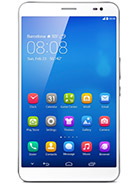 Huawei MediaPad X1 |
Pros | Cons |
|
|
|
| Hands-on | ||
Reader comments
- Amir
- 12 Jul 2014
- 0@Y
I'm interested in the new Samsung 8.4, but can someone explain what does it mean that the tablet comes with no DivX and AC3? I am sure that if it was a big issue Samsung would have put it on, or am I wrong?
- AnonD-152462
- 30 Jun 2014
- utP
Android and iPad only lineup? Boring!!!!
- verde
- 10 Jun 2014
- ajN
I wish for a 10 inch tablet with 720p screen, without cameras and without microphone, thin, light and with good specs (2GB RAM, 16GB storage and good CPU and GPU). And only Wi-Fi, in order to be cheap. Is there a tablet like this?